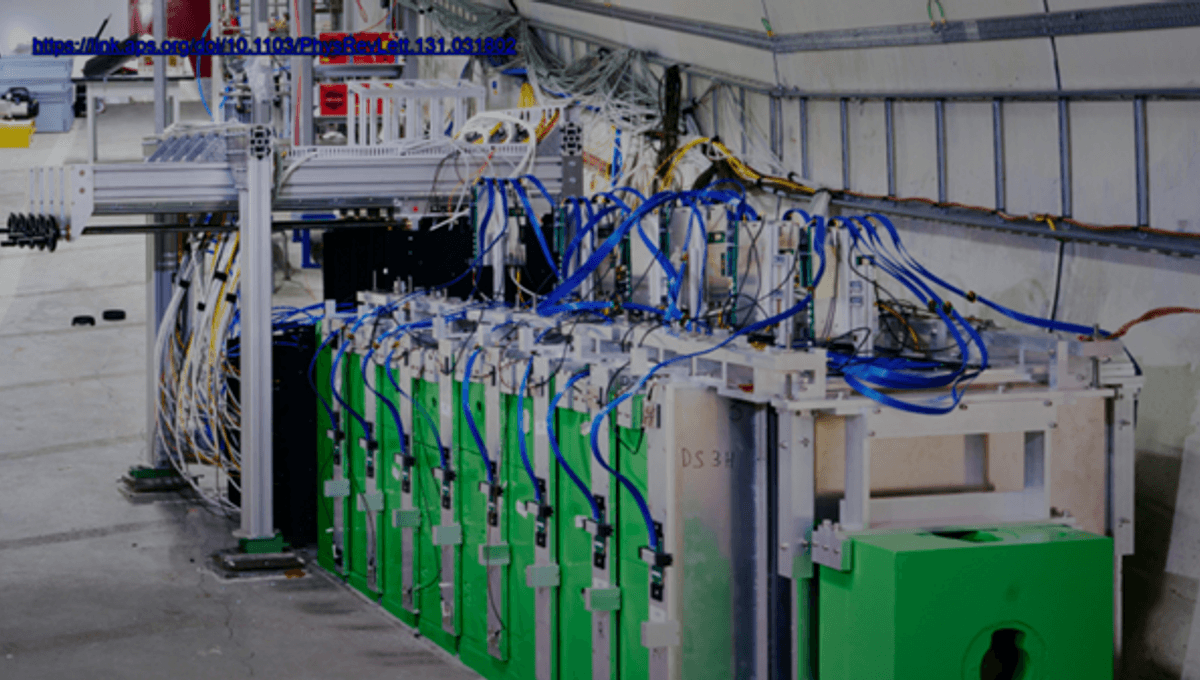
For the first time, neutrinos produced from nuclear reactions triggered by the Large Hadron Collider have been detected. Although physicists have been sure that the reactions occurring when particles are accelerated to close to the speed of light and crashed together produce neutrinos, capturing the evidence has been a different matter. The achievement could help particle physicists resolve some of the great unknowns of subatomic particle behavior.
In the 1930s, physicists noticed the products of many nuclear reactions appeared to be carrying less energy than the particles that preceded the reaction. This violates the law of conservation of energy, and the obvious explanation was that there were additional products we were missing. Such particles, named neutrinos, would need to be very light – for a long time it was thought they were massless – and interact only very weakly with more familiar objects. Otherwise, we would have found them easier to spot.
Despite some scorn at the idea of undetectable objects invented purely to resolve a problem, neutrinos were confirmed coming from a nuclear reactor in 1956, the finding winning the Nobel Prize. They’ve since been found originating from the Sun, interactions between cosmic rays and the upper atmosphere, and high-energy astronomical events such as supernovas.
“With each new source has come new insights, with important implications for many fields, from particle physics to geophysics to astrophysics and cosmology,” the Forward Search Experiment (FASER) collaboration writes. Researchers have even identified three types, known as flavors. Although trillions pass through your body every second, it takes vast tanks of water buried underground to see the tracks created by the tiny proportion that produce or alter other particles in their passage.
The numbers produced in machines like CERN’s Large Hadron Collider are naturally a tiny fraction of those of astronomical origin, making the task of finding them all the harder. Nevertheless, this has now been done by two teams independently.
“Neutrinos are produced very abundantly in proton colliders such as the LHC,” Cristovao Vilela of the SND@LHC Collaboration, told Phys.org. “However, up to now, these neutrinos had never been directly observed. The very weak interaction of neutrinos with other particles makes their detection very challenging and because of this they are the least well studied particles in the Standard Model of particle physics.”
Indeed, neutrinos are the only particles in the Standard Model, and therefore confirmed to exist, that had not been detected from particle colliders.
The two teams took different approaches to neutrino capture. The FASER collaboration placed their detector along the beam line, so that the highest energy neutrinos, those continuing along a similar path to the particles, would pass through it. While still hard to observe, high-energy neutrinos are more likely to interact with other matter than lower-energy ones.
The FASER detector consists of 730 sheets of tungsten, each 1.1 mm (0.044 inches) thick, with emulsion films between. The team was rewarded with 153 detections above background level, with energies of more than 200 billion electron volts over five months of observations.
SND@LHC, on the other hand, placed their detector to one side and observed just eight candidate events. Both teams shielded their detectors with a hundred meters of rock and concrete, blocking most of the other particles produced in the reaction. Neutrinos, with their low chance of interacting with all that mass, passed through unscathed. Nevertheless, Viela explained that for every neutrino. the SND@LHC detector picked up tens of millions of muons that triggered very similar signals.
Tales of needles in haystacks don’t do justice to trying to pick the neutrino interactions out from those caused by muons.
The discovery has been announced in two papers in Physical Review Letters by FASER and SND@LHC
H/T Phys.org
Source Link: First Detection Of Particle Accelerator-Produced Neutrinos At The Large Hadron Collider